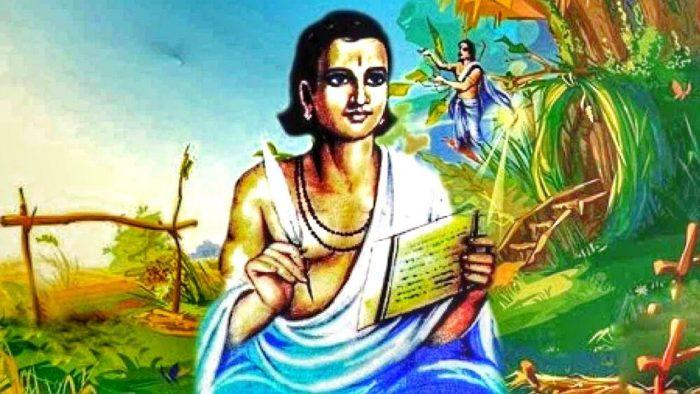Between 320 and 550 CE, the Gupta Empire ruled over areas of southern, central, and Northern India. The achievements of this era are recognized in the fields of philosophy, religion, science, architecture, and the arts. The Gupta Empire began to rapidly expand under Chandragupta I (320–335), who quickly became the empire's first sovereign emperor. It signalled the end of 500 hundred years of dominance by the provincial powers and the unrest that followed the fall of the Mauryas. More significantly, it marked the start of what became known as India's "Golden Age," a time of general prosperity and expansion that lasted for the following 250 years.

Gupta Empire - UPSC Notes
The early history of the Gupta dynasty is mostly unknown. The most reliable sources of information we have about those days are the travel journals and writings of Buddhist monks who visited this region of the world. In this regard, the travelogues of Yijing (I Tsing, 635–713 CE), Hiuen Tsang (Xuanzang, 602–664 CE), and Fa Hien (Faxian, c. 337–422 CE) prove to be helpful. During Srigupta's reign (c. 240–280 CE), the Gupta Empire included just Magadha and possibly a portion of Bengal.
Similar to his predecessors, the Mauryas and other Magadha rulers, Srigupta governed from Pataliputra, which is located near present-day Patna. Ghatotkacha, Srigupta's son, ascended to the throne in approximately 280–319 CE.
- The Gupta Empire was a golden age of Indian history that lasted from approximately 320 to 550 CE. Founded by Sri Gupta, the empire reached its peak under the rule of Chandragupta II, also known as Vikramaditya. The Guptas established a centralized and efficient system of government, and their empire stretched from the Indus River in the west to the Brahmaputra River in the east, and from the Himalayas in the north to the Vindhya Mountains in the south.
- The Gupta period was marked by significant achievements in various fields. In art and architecture, the Guptas built magnificent temples, sculptures, and paintings that showcased their artistic prowess. The Ajanta Caves, Ellora Caves, and Sanchi Stupa are some of the notable examples of Gupta art. In literature, the Gupta period saw the flourishing of Sanskrit literature, with works such as Kalidasa's plays and the Panchatantra fables gaining prominence.
- The Guptas also made significant contributions to science and mathematics. Aryabhata, a renowned astronomer and mathematician, lived during the Gupta period and made important discoveries in the fields of astronomy and mathematics. He propounded the heliocentric theory, which states that the Earth revolves around the Sun, and also calculated the value of pi.

Chandragupta I
The Gupta monarchs took note of the advantages of keeping a cavalry from the Kushans, and Chandragupta I, son of Ghatotkacha, effectively employed his formidable army. After marrying Kumaradevi, Princess of Licchhavi, Chandragupta I inherited vast mines containing iron ore that were close to his territory.
With refined metallurgy, forged iron was not only used to satisfy domestic needs but also developed into a desirable commodity for trade. The territorial rulers of different regions of India were forced to submit to Chandragupta I because they were unable to oppose his greater military might. It is assumed that the Gupta Empire's borders had already reached Allahabad by the time of his reign's conclusion.
Why is Chandragupta important?
Chandragupta established the Mauryan dynasty and served as the first emperor to bring together the majority of India under a single administration. He is recognized for rescuing the country from mismanagement and liberating it from foreign control.
Discover how the Marathas, under the courageous leadership of Shivaji, stemmed the tide of the Mughal onslaught in medieval India.
Samudragupta
The next in line for the throne was Chandragupta I's son, Samudragupta (c. 335–375 CE), a military genius who carried on the kingdom's expansion. By the end of his Southern Campaign, Samudragupta had added a section of South India to his kingdom after capturing the remaining parts of North India. The widespread consensus is that the Gupta Empire stretched from Balkh, Afghanistan in the west to the Brahmaputra River in the east, and from the Himalayas in the north to the mouth of the Krishna and Godavari rivers in the south.
Samudragupta paid great attention to rajdharma, or the duties of a king, and he was especially careful to adhere to the economic, social, and political principles outlined in Kautilya's (350–275 BCE) Arthashastra, a treatise that provides precise guidelines for running a monarchy. He made significant financial contributions to a range of charitable causes, including the advancement of education.
He was not just a brave monarch and a skilled statesman, but also a talented poet and musician. His varied skill is shown in the quantity of gold coins he has in circulation. Most expressive of his compassionate virtues is an inscription known as the Allahabad Pillar, which was likely commissioned by later Gupta monarchs. Samudragupta was also an advocate of fostering amity between different religious groups. For example, he approved and encouraged the building of a monastery in Bodh Gaya for Meghavarna, the king of Ceylon.
Chandragupta II Vikramaditya
After Samudragupta's rule, there seems to have been a brief power struggle. Ramagupta, his eldest son, succeeded him as Gupta king. The seventh-century Sanskrit writer Banbhatta made a note of this in his autobiographical work Harshacharita. What happened next is a portion of the drama Devi Chandra Guptam by Sanskrit poet and playwright Visakh Dutta. According to legend, Ramagupta was shortly vanquished by a Mathuran Scythian monarch. However, in addition to the kingdom, the Scythian king had a thing for the well-known scholar Queen Dhruvadevi.
Ramagupta handed Dhruvadevi over to his rival to keep the peace. Chandragupta II, the younger brother of Ramagupta, and a couple of his trusted advisors then proceeded to meet the enemy in disguise. He killed the Scythian king and saved Dhruvadevi. Dhruvadevi openly denounced her husband's actions. Ramagupta was ultimately slain by Chandragupta II, who afterwards wed Dhruvadevi.
Chandragupta II (c. 380–414 CE) was a kind monarch, a capable leader, and an accomplished administrator, just like Samudragupta. He extended his dominion to the Arabian Sea coast by overthrowing the satrap of Saurashtra. His valiant endeavors brought him the title of Vikramaditya. To optimize his administration over the enormous empire, Chandragupta II established Ujjain as his second capital. He also made sure the navy was strengthened. As a result, the seaports of Tamralipta and Sopara developed into active centers of maritime commerce.

He also showed considerable support for culture and the arts. His court was frequented by some of the greatest academics of the day, including the Nava Ratna (nine diamonds). His philanthropy benefited several hospitals, orphanages, and charity organizations. Along the side of the route were rest stops for travelers. During this period, the Gupta Empire reached its zenith and there was unparalleled advancement in all aspects of life.
Delve into the history of the first Muslim Empire of north India, the Delhi Sultanate.
Administration of the Gupta Empire
The Rajya, Rashtra, Desha, Mandala, and other administrative divisions were among the divisions that made up the Gupta Empire. As a result, decentralization of power was valued. The administrative division made it easier for the kings to maintain methodical control over their domains.
A Visayapati was designated to supervise each of the many districts, or Vishayas, that made up the provinces. In this activity, his council of representatives supported them. The rural bodies, which included the village headman and the elders, were in charge of overseeing the welfare of the villages during the Gupta dynasty. The guild merchants established the trading cities. The empire engaged in trade with the East Indian islands, China, Ceylon, and several European nations.
Important Gupta Period UPSC Notes
In northeastern India, the Gupta Dynasty ruled the Magadha state from the middle of the third century until 543 CE. Historians consider the Gupta era to be India's classical age, during which the country's norms for philosophy, art, architecture, and literature were created. The 5th-century Sanskrit poet Kalidasa attributes the Guptas' conquest of roughly 21 countries, both internal and external to India, including the Parasikas, Hunas, Kambojas, and others.
Gupta Empire's Cultural Progress
Sanskrit achieved even greater success than previously and was once again recognized as a language franca. Epics like Abhijnanasakuntalam, Malavikagnimitram, Raghuvansha, and Kumarsambhaba were written by poet and dramatist Kalidasa. Vishakhadatta wrote Mudrarakshasa, Harishena, a famous panegyrist, flute player, and poet, authored Allahabad Prasasti, Sudraka wrote Mricchakatika, and Vishnusharma wrote Panchatantra. Sanskrit and Prakrit linguistics, philosophy, and science benefited from the contributions of Vararuchi, Baudhayana, Ishwar Krishna, and Bhartrihari.
In addition to writing the Brihatsamhita, Varahamihira made contributions to astrology and astronomy. Aryabhata, a brilliant mathematician and astronomer, produced the Surya Siddhanta, which addressed many topics in geometry, trigonometry, and cosmology. Shanku committed his life to writing geography-related books. The discoveries made by Dhanvantri contributed to the improvement and effectiveness of the Ayurvedic medical system in India.
Surgeons were proficient in performing surgeries, and vaccinations against communicable illnesses were administered. Even now, two days before Diwali on Dhanteras, people celebrate Dhanvantri's birth anniversary. This intellectual explosion did not just occur in the royal courts. Learning the subtleties of Sanskrit literature, music, painting, debate, and oratory was encouraged. Numerous educational establishments were established, and those that already existed were given ongoing support.

Culture, Art, and Architecture
Ajanta, Ellora, Sarnath, Mathura, Anuradhapura, and Sigiriya have some of the best specimens of the era's architecture, sculpture, and painting. Town planning was one of the many fields in which the fundamental principles of Shilpa Shastra (Treatise on Art) were applied. The finely sculpted gold coins, jewellery, sculptures made of metal, stone-studded golden stairways, and iron pillars (the Dhar Iron Pillar is double the size of the Delhi Iron Pillar) all speak eloquently about the metalsmiths' abilities.
Retrace the history of the first major dynasty of north India, the Mauryas.
Additionally flourishing were carved ivory, wood and lacwork, brocades, and embroidered textiles. Vocal music, dance, and the playing of seven different musical instruments—such as the flute, mridangam (a drum), and veena, an Indian stringed instrument—were the rule rather than the exception. These were customarily carried out as a sign of devotion in temples. Artists and writers were urged to contemplate the imagery and convey its essence via their works in a traditional Indian manner.















